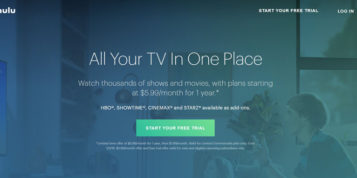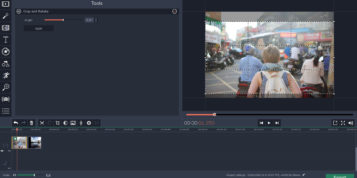Brand journalism is one of the hottest trends for online marketers. With the proliferation of high-quality and inexpensive cameras and easy distribution platforms, every company can now be a media company.
However, when thinking about your marketing strategy it’s important not to focus solely on heavily branded materials like product overviews and PR collateral. Sure, it’s important to have content that explains what your products are all about, but these would most likely appeal to a small group of current and prospective customers. In order to reach a wider audience you need to zoom out from your company and create content that would interest others in your space. The goal here is not more qualified opportunities and leads. Forget about that. With branded journalism, the goal is to make people aware of your brand by creating engaging content. If done correctly, you could find new audiences and strengthen the brand’s relationship with exiting customers.
Share knowledge
People love to learn. And people love ‘free’. Just look at the MOOCs revolution that allows anyone to get ivy-league education for nothing. You may wonder why Harvard is giving away its pricey classes for free. It’s simple. It reflects well on the brand and it establishes the university as a leader in education. It is also serves the classic mission of any university: teach, educate, inspire.
You can do the same. In any organisation there is a vast amount of knowledge that is extremely interesting to outsiders. If you share best practices, guides and useful case studies, you will soon find new readers and viewers (who might never have heard of your organisation before) to consume this content. It will most likely go viral and get picked up by other publications. It happened to us at Kaltura when our video was picked up by ReelSEO or when our HTML5 blog post got many hits via Google queries.
Useful tip: be specific. Use stats and link to useful sources. It will add credibility to your article.
Forget the Competition
If you are serious about doing good branded journalism, start thinking like a journalist. Focus on writing useful and balanced pieces that offer real insight. Don’t ignore other players in the space and be sure to give credit to them, when credit is due. You will soon find that the same players link to your content because they feel their customers could find it useful. And that’s exactly where you want to be.
Important tip: don’t plug your product in every other sentence. Your readers are savvy and always look for “the catch” or secret motive. Don’t turn them off.
Use Video
The Internet is full of great content, so how can you stand out? Video is a great way. If you are going to a conference, use your phone to capture parts of the presentation. If you have access to a professional camera, that’s even better. People love video and although video is now very easy to produce many of your competitors won’t make the effort. Video will also give you new outlets – like YouTube and Dailymotion -where your content can be indexed and found.
Important tip: make a habit of carrying your point-and-shoot with you. Most of them are still better than smartphones since they offer physical zoom and better sound.
Distribute wisely
Once you have a great piece of content, the fun can begin. You need to be proactive about finding your audience. Post it in relevant groups on LinkedIn and Facebook, tweet about it and encourage your colleagues to re-tweet. If it’s a video, upload it to video destinations, if it’s a presentation, share it on sites like Slideshare.
Important tip: before publishing a good article on your site, send it to successful blogs and offer them the chance to publish the piece first, in return for a link to your website. Later you can publish the same article on your own site.
Think SEO
SEO is a major part of your distribution technique. If you do it right, Google and the market treads will do much of the distribution for you. First, make sure that your article’s title includes many popular key words (based on the Google AdWords tool). Also make sure to phrase the title similarly to how people would search for content (for example, in the form of a question). Here is a good example: Why You Should Start Learning HTML5 – A Beginners Guide
Important tip: use Google Webmaster Tools and have Google index your site periodically. This will make sure that new pieces (texts, images, videos) come up in search results.
Track Analytics
Creating and distributing great content is time consuming, so you want to make sure that you can see the results and improve your strategy. Using your site analytics you can see the top referral sites so you can know where your visitors came from. You will also be able to see top search terms that generated traffic.
Important tip: use a url shortener (like TinyURL or goo.gl) for links you post on external sites (for example, for each LinkedIn group use a different url). This way, you will be able to track which specific posts and groups drive the most traffic.
Branded journalism is a key way to promote your message to a wider audience and position yourself as a thought-leader in your market. Today, with the use of video, branded journalism becomes even more engaging and exciting – so go ahead and try it. Feel free to share your experiences and tips in the comments below.






